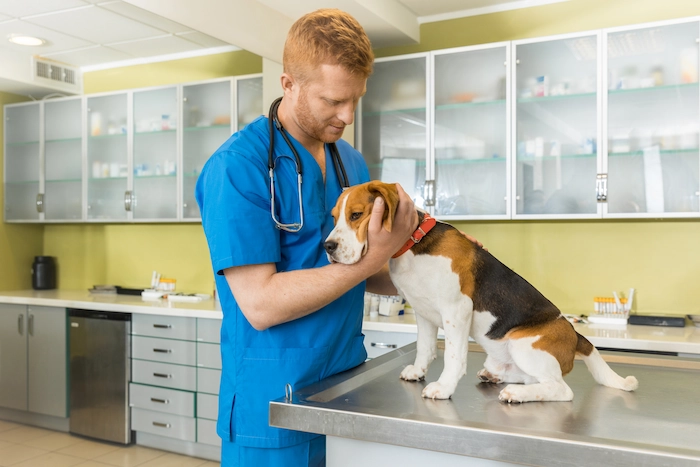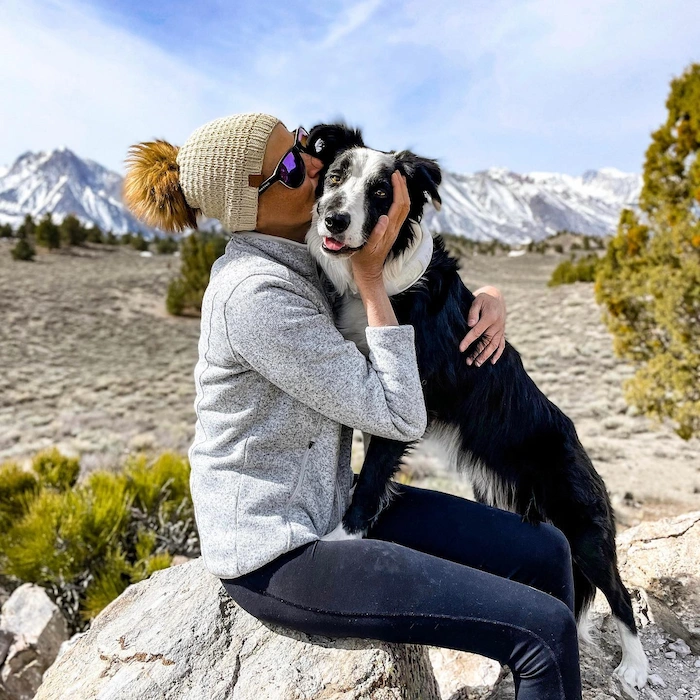When left alone, dogs can sometimes be mischievous. Dog owners may find their pets chewing a favorite shoe, searching for food in the bins or even inappropriately eliminating well past their potty training days. Sometimes, these types of behaviors are just a normal part of owning a dog. But if destructive behavior becomes the norm with your pet, a bigger issue may be at play. Puppies are as much at risk of developing separation-related problems as shelter dogs post-adoption. Seven out of ten dogs exhibit some sort of separation anxiety-related behavior problems. While most people prefer to prevent canine separation anxiety, sometimes these issues develop despite their best efforts.
Understanding separation anxiety is the first step toward helping your dog overcome it. At Halo Collar, we want your dog to live a happy, stress-free life. By using the Halo Collar with some tips to help treat separation-related problems, you can successfully help ease your dog’s underlying anxiety and hopefully eliminate unwanted behavior.
Understanding Separation Anxiety In Dogs
Separation anxiety refers to dogs who are overly attached to their owner, to the point where they follow them around at all times and can’t bear to be left alone. Dogs with separation anxiety can become destructive when you’re not around and sometimes even show signs of aggression. When your dog suffers from separation anxiety syndrome, it can cause emotional and financial distress.
Like all anxiety-related behavioral disorders, this serious issue is a sign of chronic and acute stress and should not be ignored. It affects both male and female dogs and usually starts when your dog is still a puppy.
Puppy separation anxiety can develop when it isn’t socialized enough, while newly adopted shelter dogs are also prone to experiencing it due to unknown history. Dogs suffering from separation anxiety experience genuine stress and distress, which can make them engage in unwanted behaviors. Some common reasons why dogs develop separation anxiety problems include:
- The loss of a family member. It may be a case of someone moving out or even a death in the family that can cause initially anxious behavior.
- New additions to the family. Sometimes, a dog that’s lived in an adult-only home may find it difficult to adjust to having human children around.
- Not getting enough exercise. Dogs that don’t receive enough exercise can get bored and start developing separation anxiety.
- A house move. Any change, especially moving out of their homes, can be stressful for your dog.
- Significant changes to their routine. Dogs are creatures of habit, so any changes may cause separation-related problem behavior.
Is Your Dog Showing Phobic or Compulsive Behaviors?
Dog owners often confuse signs of separation anxiety with a lack of training or simply dismiss it as bad behavior. The signs anxious dogs generally display usually signal they’re in distress. Your dog might be showing separation-related behavior problems if it frequently engages in one or more of these behaviors:
- Pacing, whining and shaking whenever you’re getting ready to leave the house
- Barking and howling for hours when you’re not with it
- Indoor accidents, even if it’s potty-trained
- Excessive drooling and panting
- Destructive actions, such as chewing furniture, destroying pillows and indoor digging
Recording dog behavior with a camera when you’re not home may be a good way to find out if your pet is showing separation-related behavioral signs.
Is Your Dog Showing Phobic or Compulsive Behaviors?

Dog separation anxiety is stressful for both the dog and the owner. Suppose your dog’s anxiety is still mild. In that case, training and behavioral interventions developed specifically to help dog owners can treat these symptoms and help your pet live a happy and secure life.
Crate Training
Crate training can be a valuable tool for dog owners who need to treat problematic behavior. You can teach your pup that the crate is its safe place by training it to associate it with fun things, such as treats and puzzle games. Dogs are naturally drawn to small places, so a crate-trained dog can become comfortable enough to be safely left alone.
Desensitization and Conditioning Training
The American Kennel Club recommends using desensitization and conditioning training. It’s when people gradually get their dogs used to being on their own by leaving for short periods that you can gradually increase as you go.
Rewards System
You can try leaving your dog with a food-stuffed toy whenever you leave it alone. This method will teach it that there are rewards for occasionally being away from you. Try taking your dog out with its Halo Collar on, then leave it with its favorite toy in the secure wireless dog fence for a few minutes at a time. Training should be fun for both of you.
Leave Your Scent Behind
Another option to reduce separation-related behavior problems is by leaving some of your worn clothes with your pup whenever you’re away. Having their existing dog owners’ scent nearby can make them feel more comfortable, creating a significant difference in your dog’s behavior.
Downplay Hellos and Goodbyes
Most dogs can develop separation-related problems when their people make too much of a big deal by saying goodbye and hello when coming home. Try downplaying your comings and goings. It teaches your pup that there’s nothing unusual about your leaving and gives them less reason to develop canine separation-related problems.
Natural Supplements
If no methods seem to work, you may be able to treat canine separation anxiety with the help of natural supplements. Your anxious dog may respond well to CBD extract, valerian and pheromone diffusers. Dogs administered medication concurrently with training may have some promising behavior modification results.
When To See a Veterinarian

If your dog’s separation-related behaviors increased over time, it might be helpful to eliminate the possibility of there being something medically wrong. Some conditions, such as a urinary tract infection, kidney disease, Cushing disease and bladder stones, may cause your dog’s incontinence. Certain medications may cause symptoms similar to separation-related behavior problems, so checking with your vet is your best option.
Can a Behavioral Specialist Help?
When dog owners’ behavioral interventions don’t fully work, and the dog is showing signs of severe separation anxiety, seeing a behavior modification specialist may help. A trainer can understand your dog’s separation-related problems and other fear-related behavior. Treating canine separation anxiety is no easy task and sometimes getting help from a professional is your best course of action.










